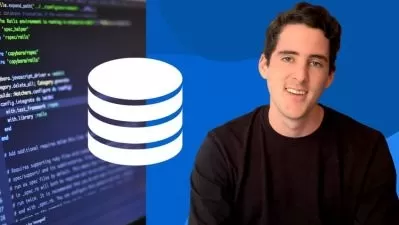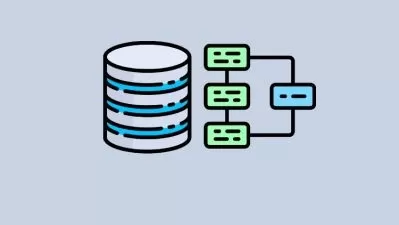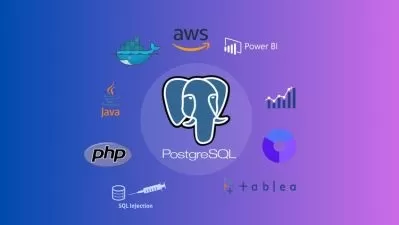SQL for Developers and Analysts with MS SQL Server
Biz Nigatu
3:36:45
Description
Guide for beginners to intermediate using real life examples
What You'll Learn?
- Hands-on learning of SQL and databases using Microsoft SQL Server
- Download a free copy of SQL Server 2017 Edition and setting up a working environment
- A basic structure of a SQL query structure
- Different SQL clauses in a way that will make more sense for you to follow
- Create various objects in SQL Server including tables, views, functions, and stored procedures
- Manage data in SQL Server and protect it
- Query data, sort, restrict the output and build sub-queries
- Manipulate data insert, delete and update works
- Group and summarize your data
- Advanced concepts in SQL and how you can be able to build reports using Excel, SSRS, and Tableau
- Where to get help when you face errors and some career advice to work as a SQL developer or analyst
Who is this for?
What You Need to Know?
More details
DescriptionThis course will give you hands-on learning of SQL using Microsoft SQL Server. The course will teach you how you could download a free copy of SQL Server 2017 Edition from Microsoft website and set up your working environment. It will teach you various objects in SQL Server including tables, views, stored procedures. After providing you a basic structure of a SQL query structure, it will show different SQL clauses in a way that will make more sense for students to follow. It will give you a basic understanding of how you can manage your data and protect it. The course will show you how you can be able to query data, sort, restrict the output and build sub-queries. You will also understand how you can manipulate data insert, delete and update works. The course will teach how you can group and summarize your data. The course will briefly touch some advanced concepts and how you can be able to build reports using Excel, SQL Server Reporting Service, and Tableau. Finally, the course will show you can get help when while working as a SQL developer and some career advice to work as a SQL developer or analyst.
Â
Who this course is for:
- Any student who want to learn the basics of SQL and databases using SQL Server
- Anyone preparing for a SQL developer or reporting analysist job interviews
- Anyone who is has a desire to learn new skills in SQL
- This course doesn't assume any prior knowledge of SQL or databases, and it will be perfect for beginners and intermediate SQL developers and analysts
This course will give you hands-on learning of SQL using Microsoft SQL Server. The course will teach you how you could download a free copy of SQL Server 2017 Edition from Microsoft website and set up your working environment. It will teach you various objects in SQL Server including tables, views, stored procedures. After providing you a basic structure of a SQL query structure, it will show different SQL clauses in a way that will make more sense for students to follow. It will give you a basic understanding of how you can manage your data and protect it. The course will show you how you can be able to query data, sort, restrict the output and build sub-queries. You will also understand how you can manipulate data insert, delete and update works. The course will teach how you can group and summarize your data. The course will briefly touch some advanced concepts and how you can be able to build reports using Excel, SQL Server Reporting Service, and Tableau. Finally, the course will show you can get help when while working as a SQL developer and some career advice to work as a SQL developer or analyst.
Â
Who this course is for:
- Any student who want to learn the basics of SQL and databases using SQL Server
- Anyone preparing for a SQL developer or reporting analysist job interviews
- Anyone who is has a desire to learn new skills in SQL
- This course doesn't assume any prior knowledge of SQL or databases, and it will be perfect for beginners and intermediate SQL developers and analysts
User Reviews
Rating
Biz Nigatu
Instructor's Courses
Udemy
View courses Udemy- language english
- Training sessions 70
- duration 3:36:45
- English subtitles has
- Release Date 2023/09/13






















